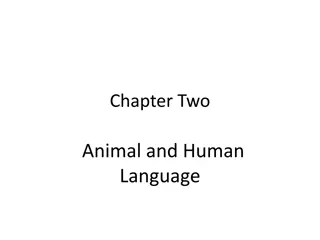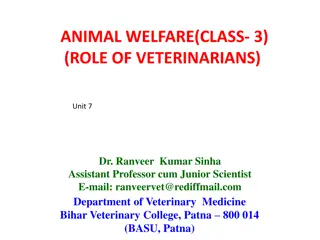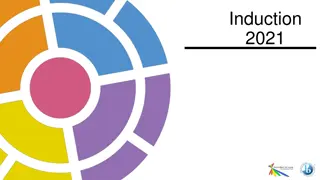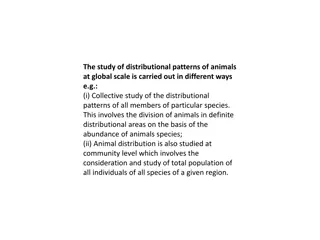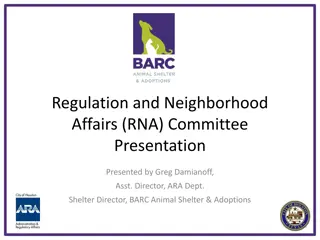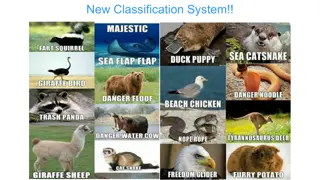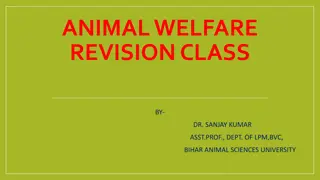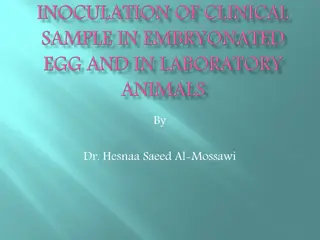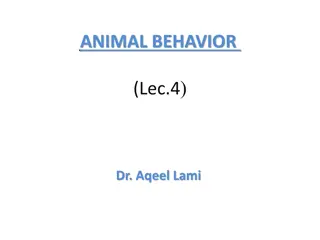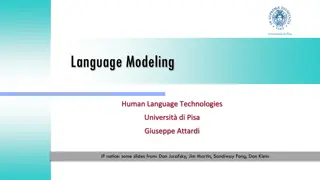How Human Language Differs from Animal Communication
Human language distinguishes itself from animal communication through properties like displacement, arbitrariness, and productivity. Displacement enables discussing abstract concepts, arbitrariness shows the non-literal connection between words and meanings, and productivity allows for endless expression possibilities. Though some animal signals show limited displacement, the richness and flexibility of human language set it apart.
Download Presentation

Please find below an Image/Link to download the presentation.
The content on the website is provided AS IS for your information and personal use only. It may not be sold, licensed, or shared on other websites without obtaining consent from the author. Download presentation by click this link. If you encounter any issues during the download, it is possible that the publisher has removed the file from their server.
E N D
Presentation Transcript
How is human language different from other animals' communication?
When we talk about distinctions between human language and animal language, we are considering both in terms of their potential as a means of intentional communication. Humans are clearly able to reflect on language and its uses. The human language has some distinct properties which are:
1. Displacement - It allows language users to talk about things and events not present in the immediate environment. Indeed, displacement allows us to talk about things and places (e.g. angels, fairies, Santa Claus, Superman, heaven, hell) whose existence we cannot even be sure of. Animal communication is generally considered to lack this property. We could look at bee communication as a small exception because it seems to have some version of displacement..
For example, when a honeybee finds a source of nectar and returns to the beehive, it can perform a complex dance routine to communicate to the other bees the location of this nectar. The ability of the bee to indicate a location some distance away mean that bee communication has at least some degree of displacement as a feature? Yes, but it is a limited type. It just doesn t have the range of possibilities found in human language
2. Arbitrariness - Is the aspect of the relationship between linguistic signs and objects in the world. There are some words in language with sounds that seem to echo the sounds of objects or activities and hence seem to have a less arbitrary connection. For the majority of animal signals, there does appear to be a clear connection between the conveyed message and the signal used to convey it. This impression we have of the non-arbitrariness of animal signaling may be closely connected to the fact that, for any animal, the set of signals used in communication is finite. That is, each variety of animal communication consists of a fixed and limited set of vocal or gestural forms
3. Productivity - It essentially means that the potential number of utterances in any human language is infinite. Humans are continually creating new expressions and novel utterances by manipulating their linguistic resources to describe new objects and situations. The limiting feature of animal communication is described in terms of fixed reference. Each signal in the system is fixed as relating to a particular object or occasion.
4. Cultural transmission - This process whereby a language is passed on from one generation to the next. It is clear that humans are born with some kind of predisposition to acquire language in a general sense. However, we are not born with the ability to produce utterances in a specific language such as English. We acquire our first language as children in a culture. The general pattern in animal communication is that creatures are born with a set of specific signals that are produced instinctively.
5. Duality - Human language is organized at two levels or layers simultaneously. This property is called duality (or double articulation ). Duality of levels is, in fact, one of the most economical features of human language because, with a limited set of discrete sounds, we are capable of producing a very large number of sound combinations (e.g. words) which are distinct in meaning.
What are the characteristics of human language that seem to be absent from other animals systems of communication?


